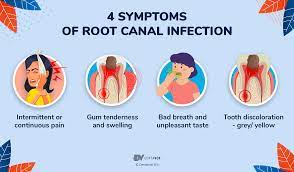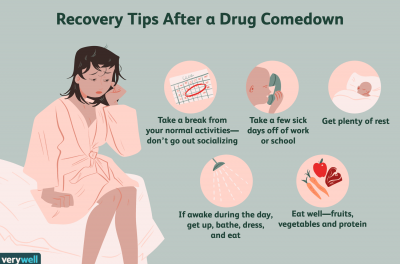vaccination schedule is a plan with recommendations for which vaccines your children should get and when they should get them. Vaccines are one of the most important ways to prevent children from getting some dangerous diseases. By exposing you to a germ in a controlled way, vaccines teach your body to recognize and fight it.
Government vaccine recommendations are just that — recommendations. You aren’t forced to get them. But state laws require your kids to have certain vaccines before they can go to daycare, school, or college, with some exceptions. Vaccines protect not just your child, but everyone they come in contact with. The more people who get vaccinated, the harder it is for a disease to spread.
Before they’re approved for use and added to the schedule, vaccines go through years of testing to make sure they work and that they’re safe. The government keeps track of any reports of side effects to make sure no problems come up.
Keep reading this article with PK Halder to understand the types of vaccines and their uses.
Types of Vaccines
These are the vaccines recommended for children, and the diseases they protect against:
Hepatitis B

Rotavirus (RV) Vaccine
Hepatitis B vaccine guards against hepatitis B virus, which damages the liver. Your child may have already received the first vaccine in the series in the hospital. The second dose comes at 1 or 2 months, and the third between 6 and 18 months.
Rotavirus
Getting vaccinated for rotavirus protects against the most common cause of diarrhea, vomiting, and dehydration in babies. It’s recommended at 2 and 4 months.
DTaP
Diphtheria, tetanus, pertussis (DTaP) is a combo vaccine that protects against three very serious diseases. Diphtheria swells up the throat, tetanus painfully tightens the muscles, and pertussis (whooping cough) makes it hard for kids to breathe.

DTaP
It’s a five-dose series that comes at 2 months, 4 months, 6 months, between 15 and 18 months, and between 4 and 6 years. Kids get a booster shot with a different formulation (Tdap) at age 11 or 12, and then every 10 years as an adult.
Hib vaccine
Hib vaccine protects against Haemophilus influenzae type b (Hib), a type of bacteria that causes an infection in the brain and spinal cord that can damage a baby’s brain and hearing. Babies need four doses, at 2 months, 4 months, 6 months, and between 12 and 15 months.
Pneumococcal vaccine

Polio Vaccine (IPV)
Pneumococcal vaccine protects against Streptococcus pneumoniae, which causes meningitis, pneumonia, and some ear infections. It’s also a four-dose series, coming at 2 months, 4 months, 6 months, and 12 to 15 months.
Polio
Polio is a disease that used to paralyze more than 25,000 people each year before the polio vaccine was invented. Now children are vaccinated against it at 2 months, 4 months, between 6 and 18 months, and between 4 and 6 years.

Measles-Mumps-Rubella-MMR Vaccine
MMR
MMR is another combo vaccine that protects against measles, mumps, and rubella. Measles gives you a rash and in rare cases, can lead to dangerous brain swelling. Mumps causes painful, swollen salivary glands. And rubella, also called German measles, can cause serious birth defects or miscarriage if a pregnant woman is infected. The MMR vaccine is recommended between 12 and 15 months and between 4 and 6 years.
Chickenpox

Chickenpox (Varicella) Vaccine
Chickenpox used to be an itchy childhood rite of passage. It too, can have serious complications such as pneumonia and encephalitis. But the varicella vaccine has made it much less common. It comes between 12 and 15 months and between 4 and 6 years.
Hepatitis A
Hepatitis A is a serious liver disease. The vaccine against it comes in two doses, given at least 6 months apart, starting at 12 months.
Meningococcal conjugate vaccine
Meningococcal conjugate vaccine guards against four different strains of bacteria that cause potentially deadly infections of the brain and bloodstream. Kids get it between ages 11 and 12, with a booster at age 16. A vaccine against an extra bacteria strain, meningococcal B, is available for older teens and young adults at high risk.
 The human papillomavirus vaccine (HPV)
The human papillomavirus vaccine (HPV)
The human papillomavirus vaccine (HPV) protects against a group of viruses that cause nearly all cases of cervical cancer and most cancers of the vulva, penis, anus, rectum, and throat. It’s recommended for children aged 11 to 12 in two doses, 6 to 12 months apart. Teens older than 15 who haven’t gotten it need three doses.
Influenza vaccine
An influenza vaccine is recommended for everyone every year, from 6 months on.
Vaccine and their doses
| RECOMMENDED VACCINE | VACCINE SCHEDULE |
| DTaP | Dose 1: age 2 months
Dose 2: age 4 months Dose 3: age 6 months Dose 4: Between ages 15 months and 18 months Dose 5: Between ages 4 years and 6 years |
| Influenza | Every year, starting at age 6 months. Extra dose recommended for children under age 9 the first year they receive this vaccine |
| HepA | Dose 1: Between ages 12 months and 23 months
Dose 2: 6 months to 18 months after first dose Catch-up series for those ages 2 years and older who have not already completed the HepA series. Two doses may be given, separated by at least 6 months. |
| HepB | Dose 1: At birth
Dose 2: Between ages 1 month and 2 months Dose 3: Between ages 6 months and 18 months Catch-up series between ages 7 years and 18 years if your child has not received all three doses |
| Hib | Dose 1: age 2 months
Dose 2: age 4 months Dose 3: age 6 months, if needed Dose 4:Booster between ages 12 months and 15 months Catch-up vaccine(s) after age 15 months, if needed |
| HPV | Doses 1-3 between ages 11 years and 12 years for both boys and girls
Catch-up series between ages 13 years and 18 years if needed |
| IPV | Dose 1: age 2 months
Dose 2: age 4 months Dose 3: Between ages 6 months and 18 months Dose 4: Between ages 4 years and 6 years Catch-up series between ages 7 years and 18 years if your child has not received all four doses |
| PCV13 | Dose 1: age 2 months
Dose 2: age 4 months Dose 3: age 6 months Dose 4: Between ages 12 months and 15 months Extra dose of PCV13 recommended for children ages 24 months through 71 months with certain health conditions. Extra dose is recommended for previously unvaccinated children with immune conditions ages 6 years through 18 years |
| MCV4 | Dose between ages 11 years and 12 years, with a booster at age 16 years
Catch-up dose between ages 13 years and 15 years, if needed, with a booster between ages 16 years and 18 years For children with high-risk conditions, a dose is recommended between ages 9 months and 10 years |
| MMR | Dose 1: Between ages 12 months and 15 months
Dose 2: Between ages 4 years and 6 years Catch-up series between ages 7 years and 18 years if your child has not had both doses |
| RV | Dose 1: age 2 months
Dose 2: age 4 months Dose 3: age 6 months, if needed, depending on the vaccine manufacturer of the previous doses |
| Tdap | Single dose recommended between ages 11 years and 12 years
Catch-up dose between ages 7 years and 10 years if your child has not had all five doses of DTaP. Check whether additional dose is needed between ages 13 years and 18 years |
| Varicella | Dose 1: Between ages 12 months and 15 months
Dose 2: Between ages 4 years and 6 years Catch-up series between ages 7 years and 18 years if your child has not received both doses |
Reference
https://www.webmd.com/parenting/baby/vaccination-schedule-what-to-expect










